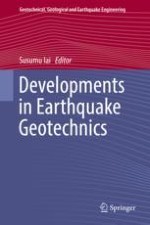2018 | OriginalPaper | Chapter
3. Past, Present, and Future Developments in Liquefaction Hazard Analysis
Author : Steven L. Kramer
Published in: Developments in Earthquake Geotechnics
Publisher: Springer International Publishing
Activate our intelligent search to find suitable subject content or patents.
Select sections of text to find matching patents with Artificial Intelligence. powered by
Select sections of text to find additional relevant content using AI-assisted search. powered by
